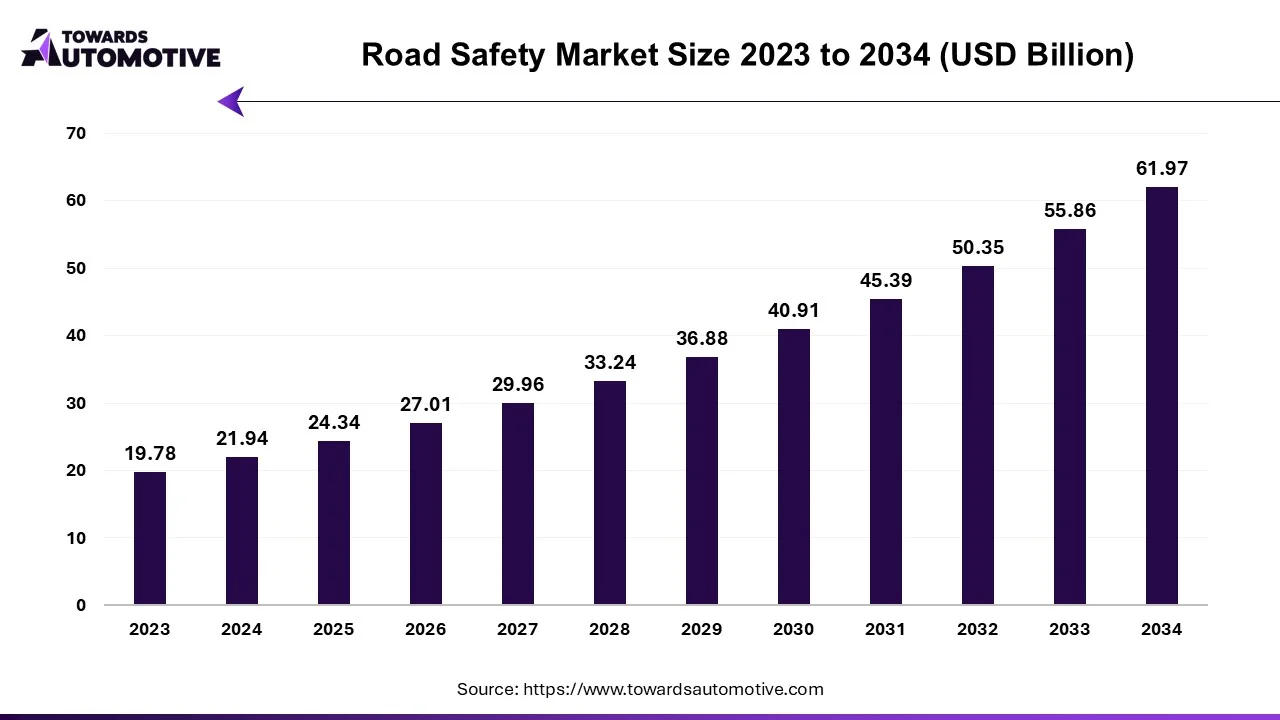The global road safety market is poised for significant growth, with a current size estimated at USD 21.94 billion in 2024. This market is expected to expand to USD 61.97 billion by 2034, growing at a robust CAGR of 10.94% from 2024 to 2034. A major contributor to this growth is the red light and speed enforcement segment, which addresses two of the most prevalent causes of road accidents: speeding and red-light violations. By leveraging automated enforcement systems such as red-light cameras and speed detection cameras, this segment plays a crucial role in reducing traffic violations, promoting road safety, and enhancing overall public welfare.

Get All the Details on Our Solutions – Brochure Download @ https://www.towardsautomotive.com/download-brochure/1253
Reducing Traffic Violations and Promoting Safer Roads
Automated enforcement tools provide continuous monitoring and evidence-based enforcement, which significantly deter reckless driving behaviors. By capturing violations in real-time, these systems ensure that traffic laws are upheld even in the absence of on-site law enforcement officers. This level of efficiency and consistency is essential in reducing accidents caused by speeding or disregarding traffic signals, which are major contributors to road crashes worldwide.
In addition to minimizing violations, red light and speed enforcement technologies enhance public safety by creating an environment where drivers are more likely to comply with road regulations. The constant presence of these systems serves as a deterrent, encouraging drivers to adjust their behavior, ultimately contributing to a safer road environment for everyone, including pedestrians, cyclists, and motorists.
Increasing Adoption by Governments and Municipalities
Governments and municipalities are increasingly recognizing the value of red light and speed enforcement solutions as essential components of their broader traffic management and safety strategies. These systems reduce the need for manual enforcement, allowing local authorities to allocate resources more efficiently. Rather than relying on traditional policing, which can be resource-intensive, these automated tools offer a more scalable and effective approach to ensuring traffic laws are followed.
Furthermore, integrating these systems into traffic management networks allows for better coordination and monitoring. Local authorities can collect data on traffic patterns, accident hotspots, and violation rates, which can inform future policy and infrastructure decisions. This data-driven approach not only enhances enforcement efforts but also supports the broader objective of improving urban mobility.
Technological Advancements in Enforcement Systems
The effectiveness of red light and speed enforcement systems has been significantly boosted by advancements in technology. Artificial intelligence (AI) and machine learning algorithms are increasingly being incorporated into these systems, improving their accuracy and reliability. AI enables real-time analysis of traffic behavior, ensuring that violations are detected and processed with minimal errors. Machine learning algorithms further enhance the system’s ability to adapt to new traffic patterns, making enforcement even more precise and efficient.
By utilizing these cutting-edge technologies, red light and speed enforcement systems can process violations faster and more accurately, reducing the likelihood of false positives and ensuring that traffic violations are addressed promptly. This technological leap is also facilitating the deployment of more sophisticated systems that can handle high traffic volumes without compromising performance.
The Impact of Urbanization and Rising Vehicle Ownership
Urbanization and increasing vehicle ownership are significant factors driving the demand for red light and speed enforcement systems. As cities grow and traffic volumes rise, the risk of accidents escalates. The need for efficient and scalable traffic management solutions has never been greater. Red light and speed enforcement technologies help mitigate the dangers associated with growing traffic volumes, ensuring that urban environments remain safe for all road users.
Additionally, as cities modernize their road infrastructure, the integration of red light and speed enforcement systems into smart traffic management networks is becoming more common. This integration not only improves the enforcement of traffic laws but also enhances the overall efficiency of the transportation system. Smart traffic networks can optimize traffic flow, reduce congestion, and prioritize safety, further contributing to the market growth of automated enforcement technologies.
Invest in Our Premium Strategic Solution @ https://www.towardsautomotive.com/price/1253
You can place an order or ask any questions, please feel free to contact us at sales@towardsautomotive.com
Explore the comprehensive statistics and insights on automotive industry data and its associated segmentation: Get a Subscription
For Latest Update Follow Us: https://www.linkedin.com/company/towards-automotive
